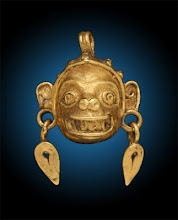- Commercially produced trumpets have been around for over a century, which is a long time - twice as long as electric guitars, for instance.
- If they are not abused, they last a long time - there are plenty of functional instruments from the 50s and 40s and quite a few from the 20s. The cutoff seems to be around 1915 - stuff that's earlier than that and still functional in any sense of the word is exceedingly rare.
- Many are reasonably abundant, having been made by thousands, and thus not exorbitantly expensive - this depends on what one collects, of course, but there is plenty of interesting stuff that does not cost an arm and a leg.
- There are plenty of technical challenges in making and playing brass, and in a century of development, a lot of smart people working on them came up with a variety of solutions. Some are ingenious and some are just kooky; some stuck but many fell by wayside... Now only the very-highest profile makers like Monette dare to experiment and be different; in the golden age of brass every company tried to be original and inventive.

Conn 80A (Victor AND/OR New Wonder) is a perfect fit for all of the above. They are good vintage horns, made between about 1915 and the 60s. They have a whole range of experimental features: the "opera glass" tuning slide behind the first valve, a "quick-change mechanism" ("a system whereby the slides connected to the valves are automatically pulled out the correct amount when the main tuning slide is pulled out to A"), and two sets of slides, LP/HP (for low pitch of A=435 / high pitch of A=457, see "Musical Pitch and International Agreement" by Weinstein in TAJIL as reprinted here). There is also an adjustable valve spring gadget inside the pistons that allows to regulate the spring tension - not visible, of course, but still interesting and AFAIK not implemented by anyone else.

I was fortunate enough to get one last December. Mine is from 1918 and seems to never have been through a serious repair; no major dents or anything; everything is in place and working - key-change thing, high-pitch slides, even a mute seems to be original. It came with a mouthpiece that's an exact replica of the one I am using on my trumpet - a deep V cup Holton - which makes it easier for me to switch back and forth. I think the bore is .484 (one of the largest-bore cornets ever, they say), and the sound is massive; it plays real nice and easy all the way to the top. The biggest problem is the one you would expect: valve wear. It is still playable and above the middle G it's hardly noticeable, but as you descend, the attacks start to deteriorate, and it takes a long time to warm up on it. I kept reading about leaky valves and wondering what those are - now I know...

(Most of the) quick-change mechanism is visible in the pic above. Small shafts on the tuning slide pull on the system of levers that pulls out each of the slides by different amounts, keeping the horn in tune. I don't often switch to A, although it does happen - mostly on occasions of impromptu jams in guitarist's favorite keys. The sound of this thing is already as dark as it can be without trespassing into the French horn territory, and when in A, it gets even more so, maybe even too much...
I did not shoot the extra "high pitch" slides as they are pretty much useless and just sit in the case.
Incidentally, the present value of A=440Hz was officially standardized across the European nations by a provision in the Treaty of Versailles in 1919, so in a way, this instrument became conceptually obsolete at birth.

Grammar nazi says: I hate it when people call cornets "coronets".


A bit of musical history trivia: Conn 80A was Bix's main axe.
ReplyDelete